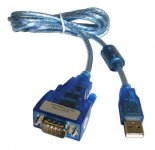Here is the read of a Namco Cyberlead V1.03 I/O
Sending ReadID command...
Answer received of 00000035 bytes read
e0 00 32 01 01 6e 61 6d 63 6f 20 6c 74 64 2e 3b 49 2f
4f 20 43 59 42 45 52 20 4c 45 41 44 3b 56 65 72 31 2e
30 33 3b 4a 50 4e 2c 4c 45 44 2d 30 31 30 30 00 dd
Sending formatversion_code command...
Answer received of 00000007 bytes read
e0 00 04 01 01 10 16
Sending jvsversion_code command...
Answer received of 00000007 bytes read
e0 00 04 01 01 10 16
Sending commver_code command...
Answer received of 00000007 bytes read
e0 00 04 01 01 10 16
Sending getfeatures_code command...
Answer received of 0000000f bytes read
e0 00 0c 01 01 01 02 0c 00 02 02 00 00 00 21

Sending ReadID command...
Answer received of 00000035 bytes read
e0 00 32 01 01 6e 61 6d 63 6f 20 6c 74 64 2e 3b 49 2f
4f 20 43 59 42 45 52 20 4c 45 41 44 3b 56 65 72 31 2e
30 33 3b 4a 50 4e 2c 4c 45 44 2d 30 31 30 30 00 dd
Sending formatversion_code command...
Answer received of 00000007 bytes read
e0 00 04 01 01 10 16
Sending jvsversion_code command...
Answer received of 00000007 bytes read
e0 00 04 01 01 10 16
Sending commver_code command...
Answer received of 00000007 bytes read
e0 00 04 01 01 10 16
Sending getfeatures_code command...
Answer received of 0000000f bytes read
e0 00 0c 01 01 01 02 0c 00 02 02 00 00 00 21


 Here's my hypothesis on the Namco I/O, in question:
Here's my hypothesis on the Namco I/O, in question:



